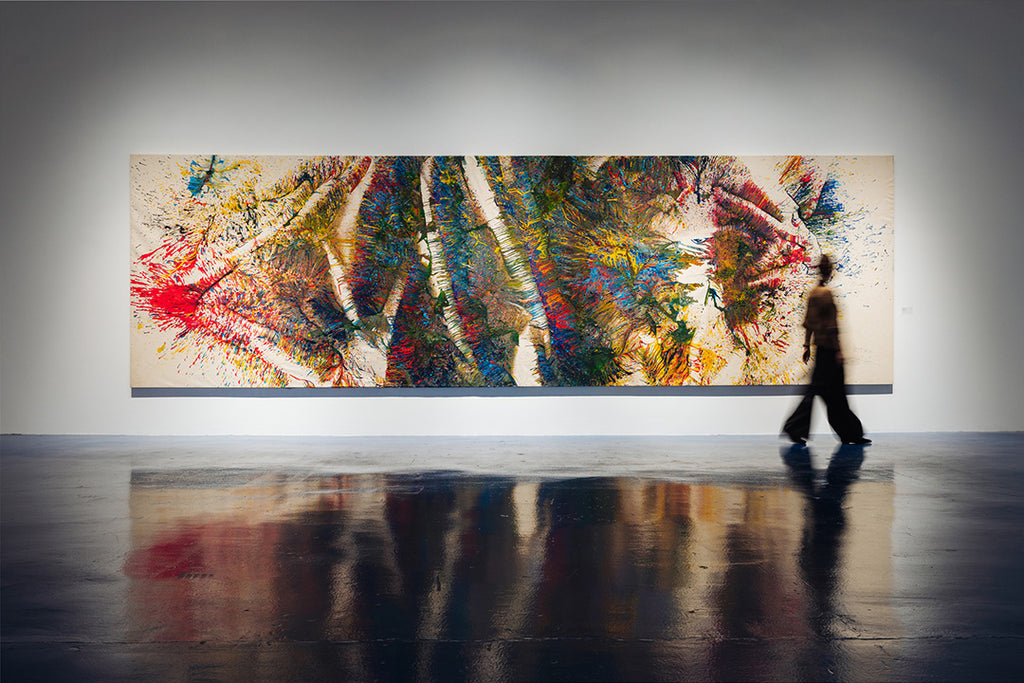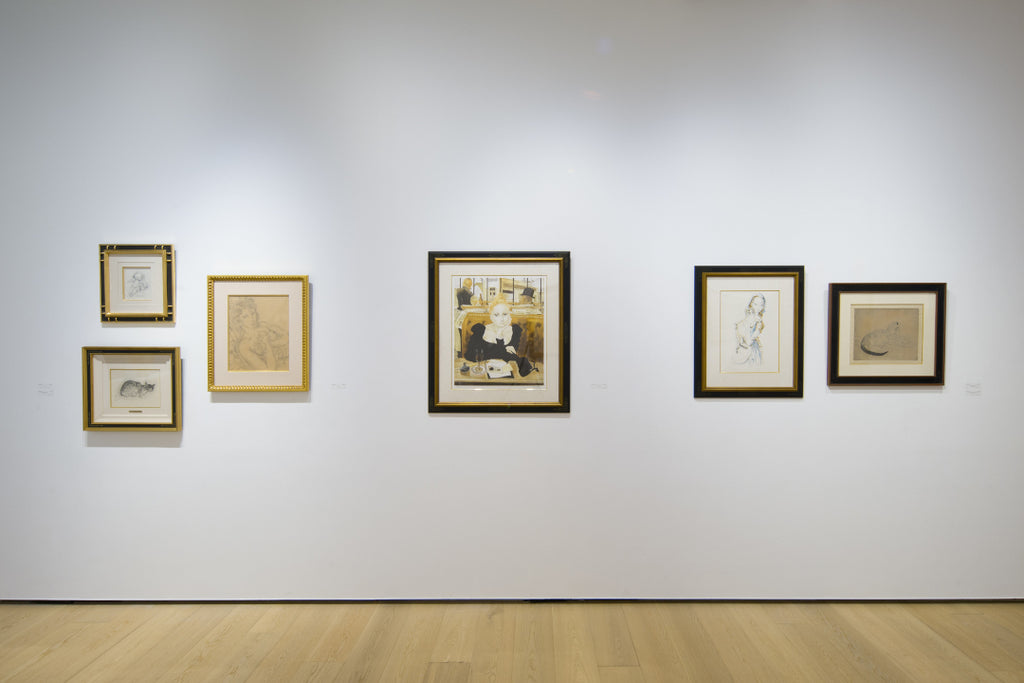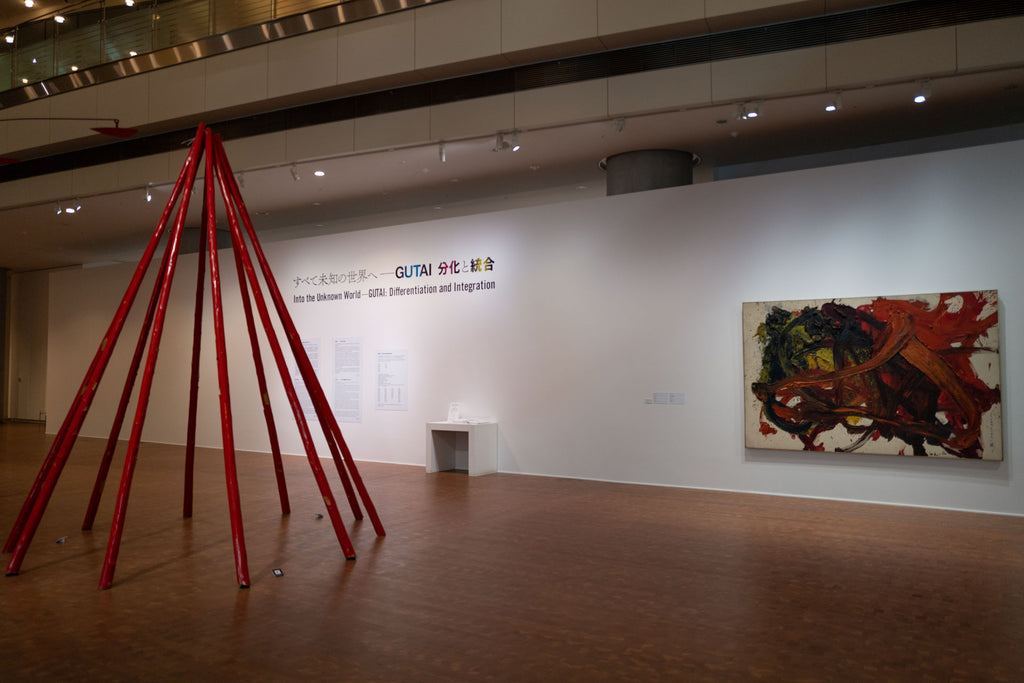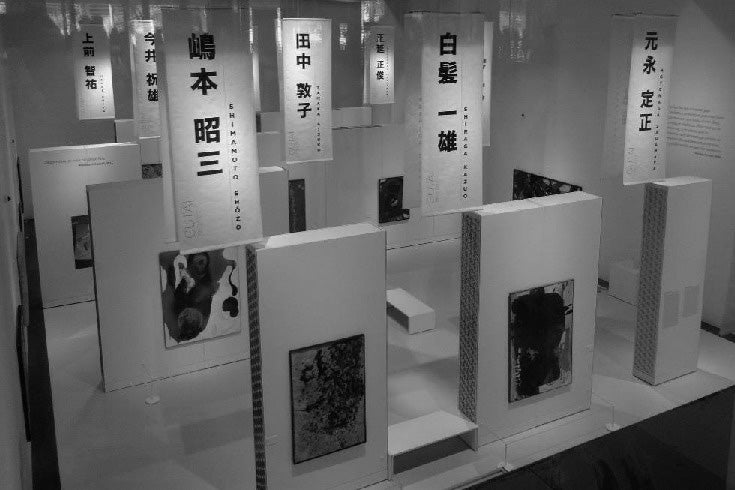ARTICLES
Art Critic Shigenobu Kimura On "Jiro Yoshihara's Theory of Art"
GUTAI STILL ALIVE 2015 vol.1
02/35
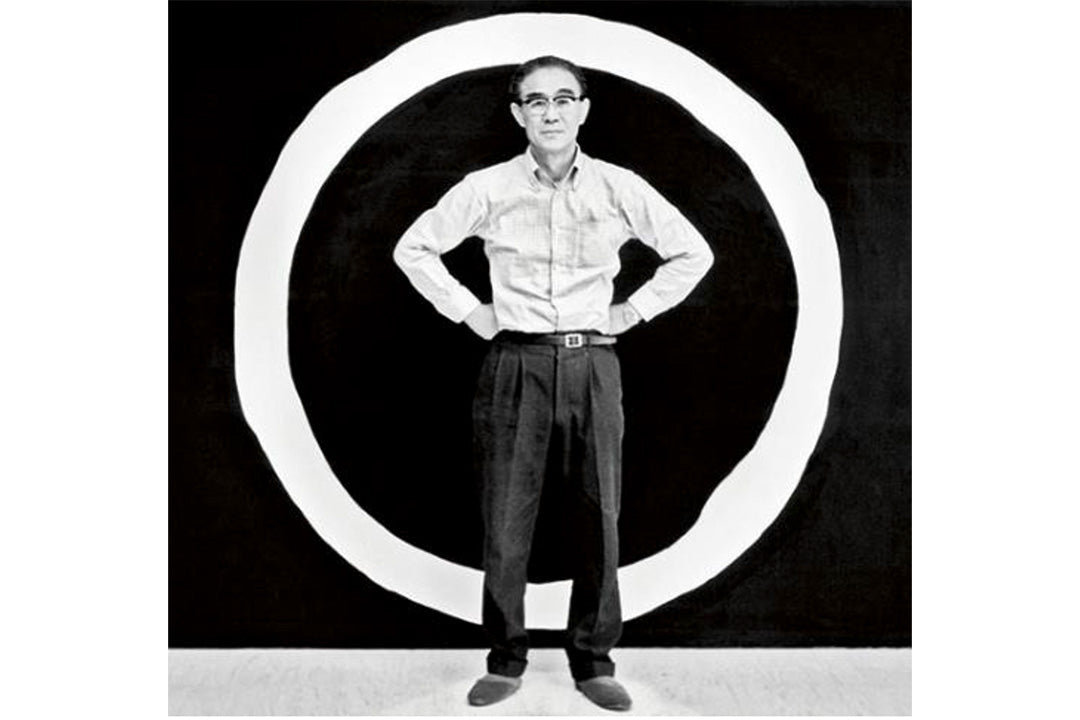
Jiro Yoshihara
A project evolving the digitized archive of the book, “GUTAI STILL ALIVE 2015 vol.1”. The second installment of this series focuses on the writings of art critic Shigenobu Kimura and the artistic theories on the Gutai movement’s leader, Jiro Yoshihara. Kimura is a researcher of prehistoric art who served as professor emeritus at Osaka University, director of the National Museum of Art and the Hyogo Prefectural Museum of Art. He has close associations with artists of the Gutai Art Association and introduced “Jiro Yoshihara’s Theory”.
Jiro Yoshihara: Spirit and Matter Join Hands While Conflicting With Each Other
Shigenobu Kimura
Professor emeritus at Osaka University, art critic
In 1999 the Hyogo Prefectural Museum of Modern Art (today’s Hyogo Prefectural Museum of Art), of which I was the director, sponsored a Gutai exhibition at the Jeu de Paume in Paris. I consulted with Daniel Abadie, the then director of the Jeu de Paume, on the exhibition plan. He was thinking that the most remarkable characteristic of Gutai was its action and suggested a plan accordingly. In fact, since Allan Kaprow recognized Gutai’s action to be the origin of happening (1966), such a view has been dominant in overseas.
On the other hand, since Michel Tapié visited Japan in 1957 and appreciated Gutai highly as a base of Informalist painting in Japan, and introduced it to the West, Gutai has also been regarded as a group of abstract-expressionist painters.
Therefore Gutai has two aspects: a group doing action in outdoors or on the stage in its early years, and a group of tableau artists in the late years.
Even though Jiro Yoshihara “came up with uncommon things” – as he said in his “Waga Kokorono Jijoden (autobiography of my mind)” – such as action in outdoors, on the stage or in the sky, and materialized them in Gutai exhibitions, he consistently produced tableaux.
Yoshihara commanded attention as a painter when he showed his abstract paintings at an exhibition held by the Nika group of artists, and set up the so-called Kyushitsukai group (1938). He exhibited pure abstract paintings bearing touches of the brush or trowel only, and Tapié introduced such works as a forerunner of Informalist painting in one of his books.
Thus Yoshihara was already a pioneer in abstract painting before World War II. For a while after the war he attempted taking in representational style. But soon he set up the Gutai group, started making action paintings in violent touches and finally reached extremely objective sign painting.
Following advice from Tsuguharu Fujita (Léonard Foujita), Yoshihara exhibited at a Nika group exhibition (1934). Fujita told Yoshihara, “Don’t imitate anyone.” Yoshihara later conveyed the message to his fellow Gutai members: “Make paintings that no one has ever seen.”
In his “Gutai Bijutsu Sengen (Gutai manifesto)” (1956), Yoshihara wrote: “In Gutai art, human spirit and matter join hands while conflicting with each other. Matter does not assimilate spirit. Spirit does not subordinate matter. When matter has revealed its essence as it is, it starts narrating and even cries out. To make the most of matter is a way to make the most of spirit.”
It is commonly thought that artwork is made of some material and has some significant form; that the more the artist’s spirit is expressed, the more individual and better the work is. But Yoshihara didn’t think so. He dealt with the existence of material work as a subject, rather than as a predicate to be added to material.
Objets, signs and events were more important than sujets, symbols and images. This objective idea inspired Gutai artists and made them create many unique works. They also won sympathy from foreign avant-garde artists sharing similar ideas, and international exchange was promoted. Their home, “Gutai Pinacotheca,” looked to be one of the world’s most active avantgarde art centers.
From the inception of Gutai, Yoshihara was eager to develop the movement globally and got into touch with Tapié and avant-garde artists and galleries abroad. Yoshihara wrote a recommendation to Armando Baldinelli, then head of an association of artists in South Africa, who introduced me to the best guide for a trip to research San people (Bushmen) in Kalahari (1965).
While Japanese art circles tend to merely import foreign trends, Yoshihara kept posing new questions to the world art scene through many exhibitions abroad, which is his great merit.
In 1967, in the catalog published for his solo show at Tokyo Gallery, Yoshihara wrote: “Recently I’ve been drawing circles only. Because circles are convenient. Just one circle is valuable as it can fill up the space, however large the space is. I don’t have to bother to think what I should paint on the canvas. The point is just what the circle will be like.”
The circle series is totally different from the aforementioned action. While a peintre spontané would show the traces of his action as they were, Yoshihara drew or painted circles precisely. Besides tableaux, Yoshihara left a great number of sketches. Especially those in his last years were done in ink, at a stretch, in rough and swift brushstrokes drawing simple circles or lines. He would choose one from these works and enlarged it, in minute brushwork, in a tableau. The effect for a peintre spontané was for Yoshihara the cause.
Jean Arp said, “We would like to produce, like plants bear fruits. Directly, without any media. In such art, there are no traces of abstraction. So we call it concrete art.” This remark befits Yoshihara well. His works are concrete the way natural
products are concrete. They have nothing to do with neither artificial concretization nor abstraction.
Yoshihara won the grand prizes at “Japan International Art Exhibition” and “Triennale-India.” Although he was an old master boasting decades of activities since his first solo show in 1929, Yoshihara didn’t receive an Order of Cultural Merit nor Japan Art Academy prize. This attests to his status of a true avant-garde
artist.
Read more about the “Gutai Art Association »
*Information in this article is at the time of publication.
